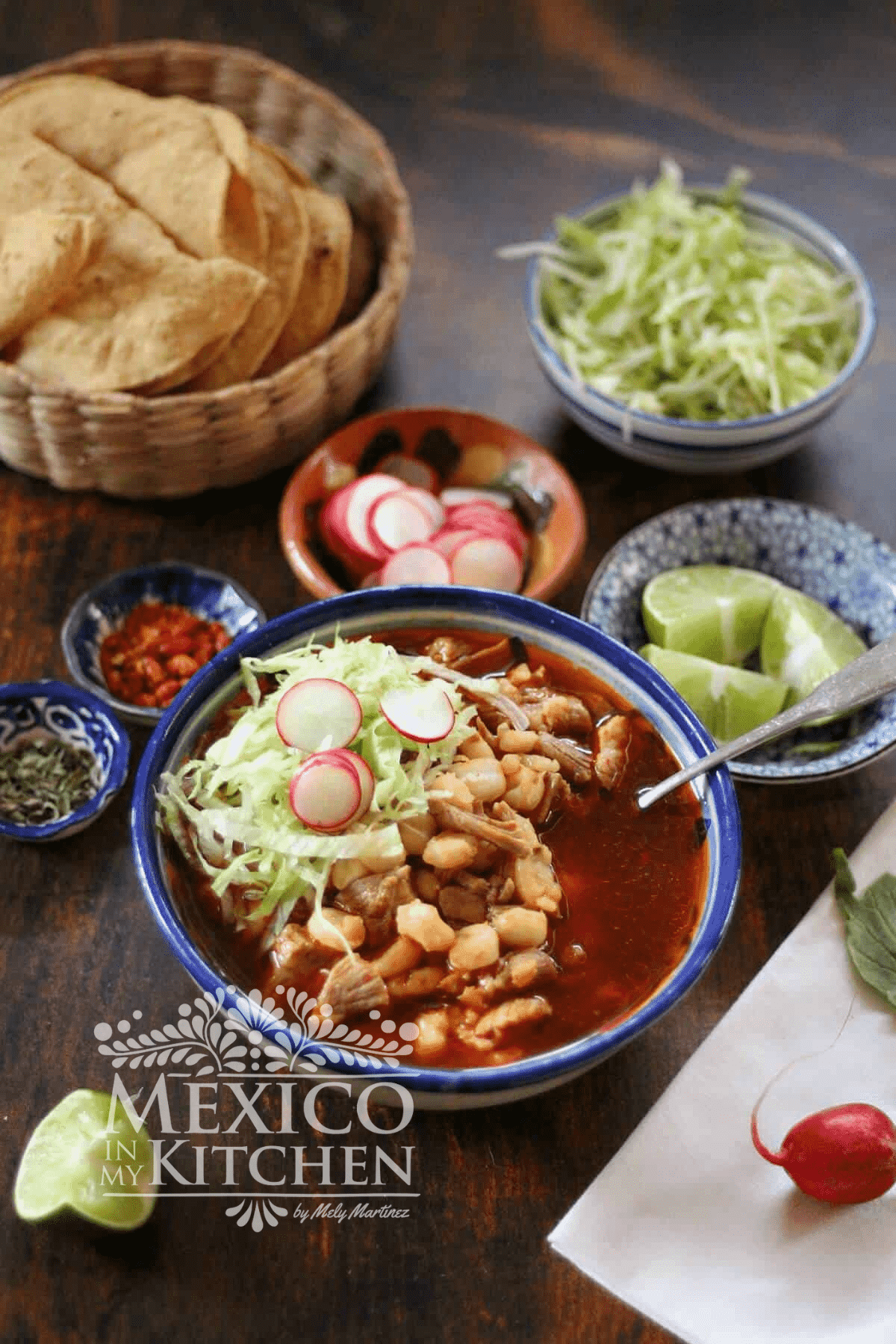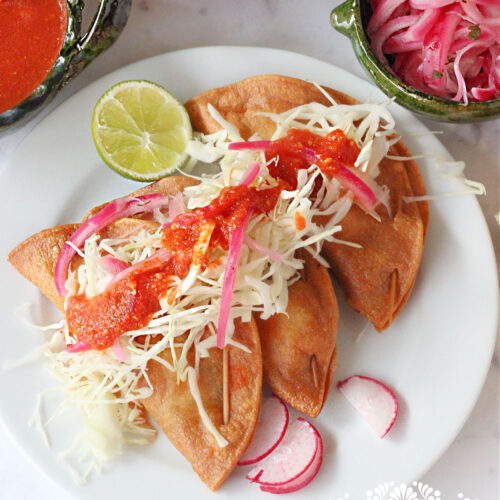Traditional Day of the dead recipes in Mexico are a big part of our traditions, and today I will share my family's collection with you. The day of the dead ( Día de Los Muertos) is a celebration and remembrance of the loved ones that have passed away. Here I will teach you the significance of the items in altars de muerto and our traditional recipes.

Day of the Dead, also known as Dia de Los Muertos, is a Mexican celebration where we celebrate and remember our loved ones who have passed on. During this two-day celebration, we prepare an altar ("ofrenda" in Spanish) with pictures of our relatives and friends who have died. We also have a special ritual called "alumbrado", where we light candles and place flowers on the table, along with the food our loved ones enjoyed during their lives.
Some of the traditional day of the dead food that you will find on those altars are:
- Pan de Muerto: Sweet bread, a key element in the Day of the Dead Altar.
- Tamales: This can have many fillings like pork, beans, cheese, or even be sweet.
- Mole: Depending on the area, moles can be almost black, red, green, or yellow.
- Buñuelos: Crunchy dessert, sprinkled in sugar and with a hit of anise seeds.
- Cafe de Olla: Mexican spice coffee sweetened with piloncillo.
- Conchas : Soft sweet pan de dulce (sweet bread)
- Calabaza en Tacha: Pumpkin covered in a thick sweet syrup made with piloncillo.
These are just a few of the many dishes present during this special celebration!
Note: If you don't see your favorite recipes on the list, please leave them in the comments, and I will do my best to share them!
Frequently Asked Questions About Day Of The Dead Recipes.
Before we get to the list of recipes, here are some questions people often ask about this Mexican holiday.
What is some traditional food eaten on the Day of the Dead in Mexico?
One of the traditional foods found on this day is the Day of The Dead bread (Pan de Muerto), followed by sugar skulls, Tamales, with different flavors and fillings depending on the localities, and Cafe de Olla, to mention some. However, the truth is that even though this is what you will traditionally find on most ofrendas, people will place any food loved by their loved ones, like fruit, cookies, or a tequila shot with a few wedges of lime and a pinch of salt.
What is a Day of the Dead Altar?
The altar (ofrenda) is a way to honor the lives of people who passed on. My Mom makes an altar every year to remember my decease Grandparents and my Dad. Besides their photographs, candles, and flower-like marigolds, you can find their favorite food. My Mom always likes to add a large bowl with roasted peanuts and fruits because my Dad loved to eat them when he was still with us.
Read more about the Day of the Dead and Mexican traditions in this complete guide I have for you to learn more about it.

For more information about the history and traditions of The day of the Dead, you can read more in this article by the Consulado General de Dallas.
What is the day of preparation for Dia de los Muertos?
October 31st is the day of preparation. On this day, people build the altars, bake food, and get ready for "All Souls' Day", on November 2nd. In some places like Mexico City, where they have a more significant celebration, like a Day of the Day party, people prepare costumes for the parades, skulls, costumes, and even fireworks.
In southern States like Oaxaca, this is the day when people start their preparations for cleaning their loved ones' tombs at the cemetery. Strange as it sounds, this tradition goes back to pre-hispanic times. After cleaning, sometimes painting, and decorating the graves with candles, flowers, and photos, people will add food. The food is always any kind of food loved by the departed, like tamales, mole, or even their favorite drink like pulque.
What do skulls represent during this celebration of life?
The skulls represent a departed soul. People usually write the name of their passed loved ones on a sugar skull and place them on the altar to commemorate them.

Traditional Day Of The Dead Recipes in Mexico
Here are some of my favorite recipes for Dia de Muertos. Browse through them and make the ones that remind you of your loved ones!
Traditional Café de Olla
A personal favorite- this Mexican spiced coffee, also called café de olla, has an aromatic combination of ground coffee, cinnamon, and raw dark sugar (or how others know them as "Piloncillo". This drink is one of the favorite Day of the Dead drinks recipes in Mexico.

Mexican Atole
This Mexican atole recipe is quick, easy, and very versatile to change to your taste. With only a few ingredients like milk, water, sugar, and corn masaIf you prefer a different flavor of atole, I recommend looking at some other atole recipes!

Champurrado
Out of all the traditional Day of the Dead recipes, this is one that I hear about the most! Champurrado is thick and rich Mexican hot chocolate. It has the unmistakable spice of Mexican cinnamon and sometimes has flavors of gloves or oranges peel.
It is unlike any other chocolate drink you have ever tried!

Pork Tamales (Wrapped In Banana Leaves)
Typically made during the holidays, pork tamales are a traditional main course served at large family dinners. It is made all over the northeastern part of Mexico.
These tamales recipe is an excellent combination of shredded pork, spicy peppers, and unique Mexican spices. They are very delicious!
Basic Tamales
This recipe for basic tamales uses masa-harina as the base. Stuff these tamales with juicy pulled pork or chicken, and serve them with your favorite type of salsa!
This basic tamales recipe is simple and easy to customize.

Zacahuil
Zacahuil is one long tamale. You'll find them for sale in markets in the Huasteca Region of Mexico, and they can be anywhere from 4-6' long. When you are going to feed a large family, this is a popular recipe.
Tradicional Mole Poblano
Mole poblano is a festive dish with chicken, dry chiles, and an extensive list of ingredients that takes some time to prepare, but it is worth every minute. There are lots of different varieties you can make.
Some other variations depending on the areas of the country, are Mole Amarillo, Mole Verde, and Mole de Olla, to name a few.

Enchiladas Rojas
This Day of the Dead recipe is a popular one in my family! Out of all the enchilada recipes I have, I always lean toward making enchiladas Rojas this time of year.
The homemade red enchilada sauce in this recipe is made with two different types of peppers and really ties the whole dish together.
Red Pozole
Another favorite Day of the Dead Recipe in Mexico is the traditional Red pozole with pork, dried peppers, and hominy served with lettuce and radishes for an incredible taste and texture.
It's the perfect offering!

Buñuelos
Actually, I take it back... buñuelos may be one of my all-time favorite Day of the Dead recipes!
This delicious buñuelos are a traditional staple when it comes to Mexican desserts. It's a homemade fritter that is lightly fried and comes out as golden as the sun. It is delightfully crispy and is dusted with sweet sugar and sometimes cinnamon (if you're lucky!).

Candied Pumpkin
Another fantastic Mexican dessert is candied pumpkin. It is swimming in a thick and sweet Piloncillo syrup and spiced with Mexican cinnamon sticks. The pumpkin is cooked fresh - no canned puree here!

Candied Sweet Potatoes
Candied sweet potatoes are another traditional Mexican dessert favorite for this occasion. Make these sweet potatoes with cinnamon, brown sugar, coconut milk, and shredded coconut.
Pan de Muerto
Finally, you must include the traditional day of the dead in Mexico recipe bread - "Pan de Muerto," or Day of the Dead Bread. It is a yeast bread that is baked entirely from scratch. As it bakes, you will smell the aroma of orange zest mixed with mouthwatering butter.
It's a family favorite all over Mexico! The Pan the muerto is a must and prevalent on Day of the Dead recipes in Mexico. You will find them often on many ofrendas.

I hope you make these Day of the dead recipes to celebrate and honor your loved ones! If any of these recipes help you, come back to let me know your experience. Please leave us a comment below and tell us all about it!
¡Buen provecho!
Mely,





Comments
No Comments